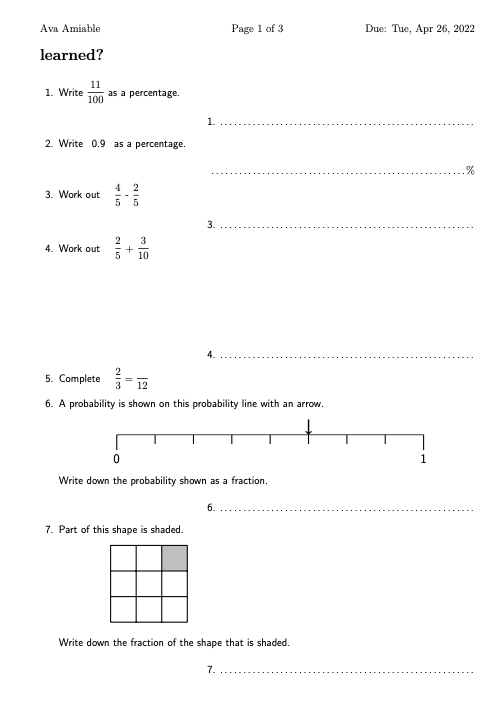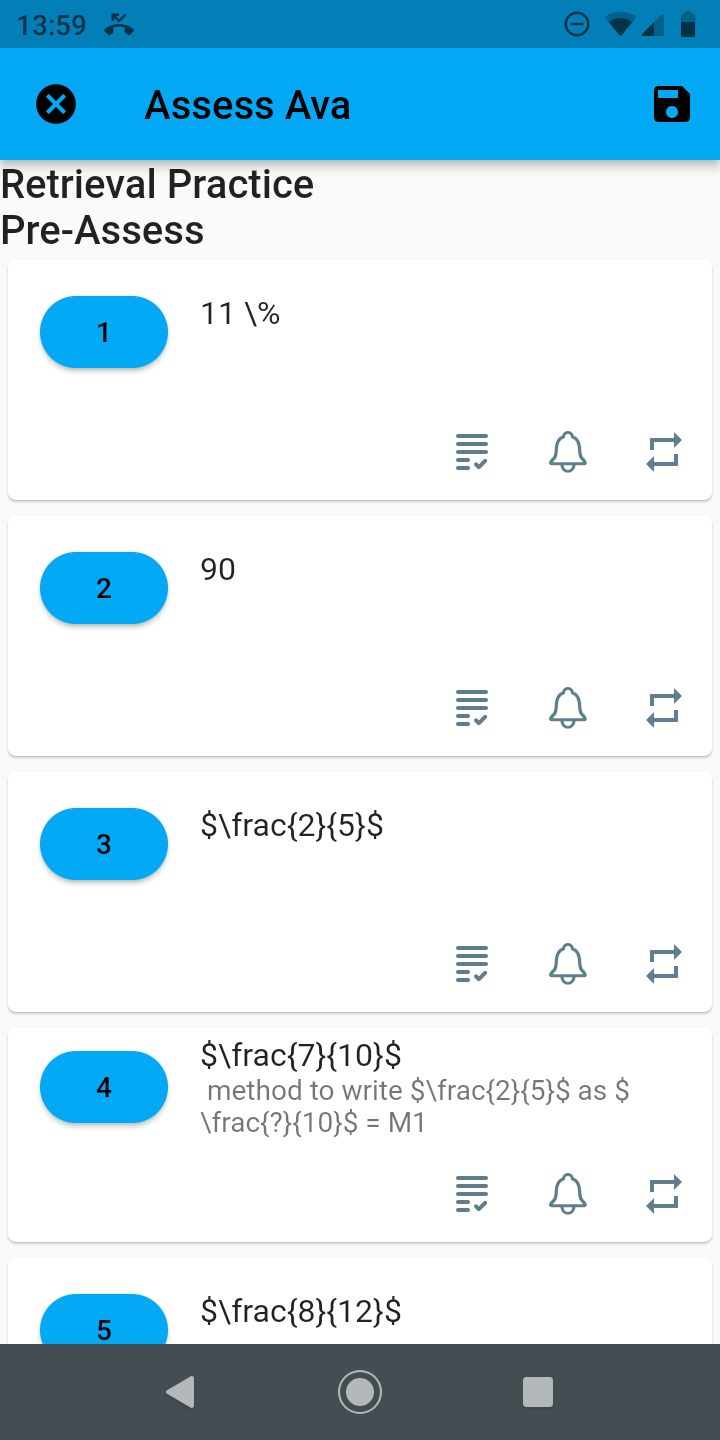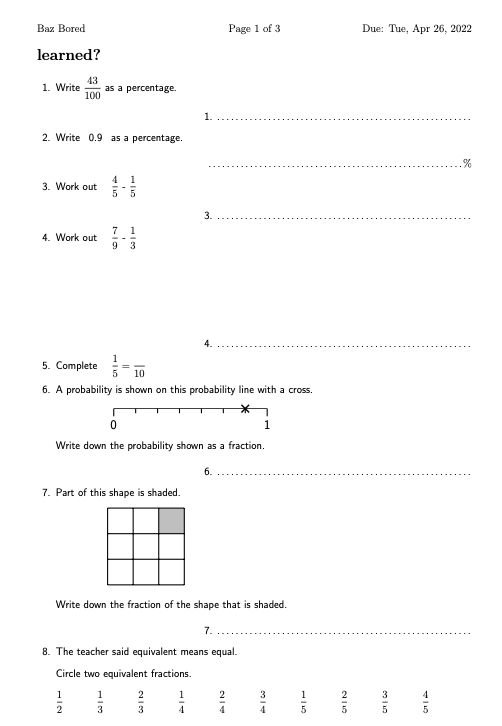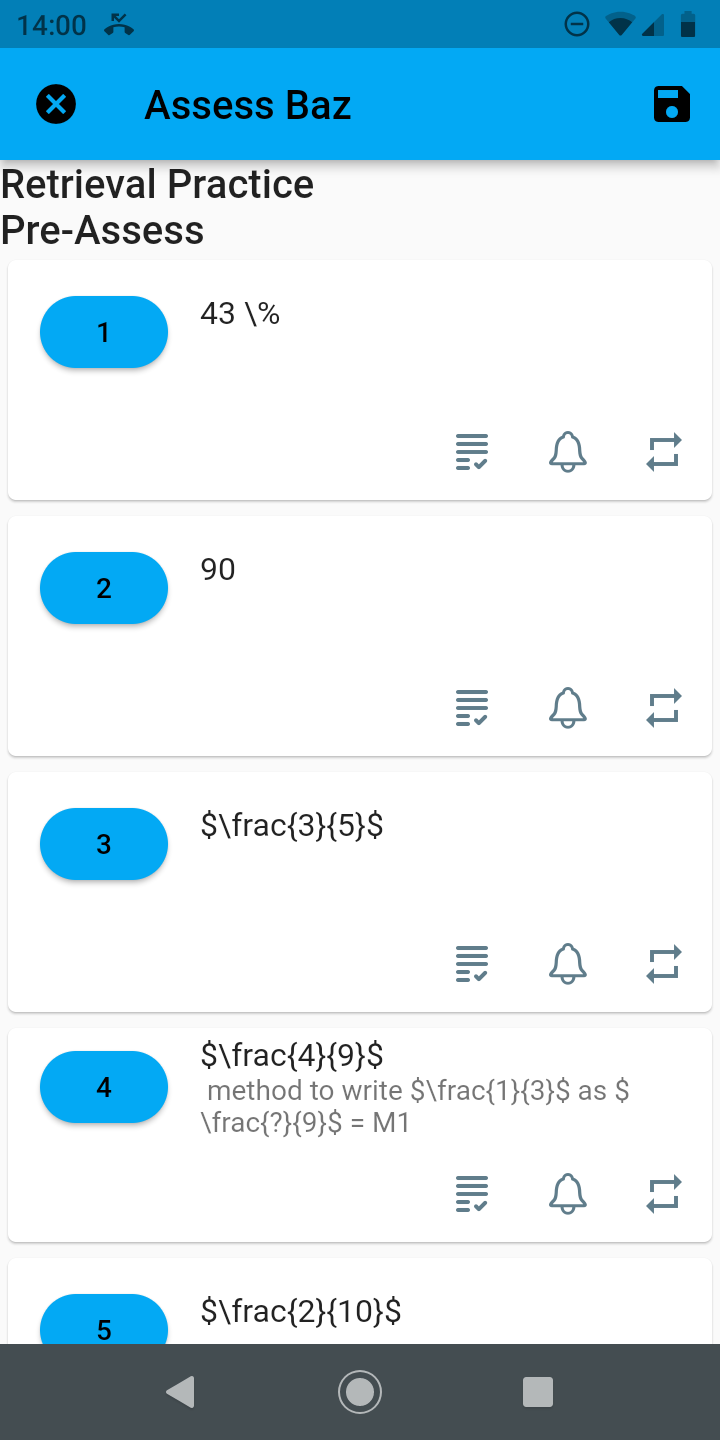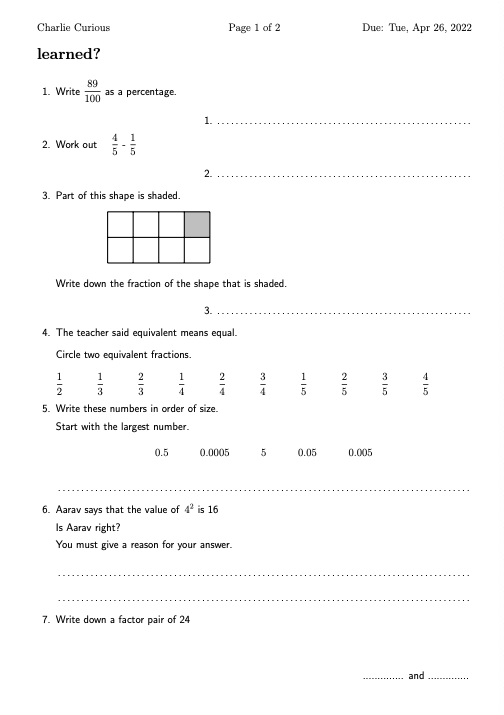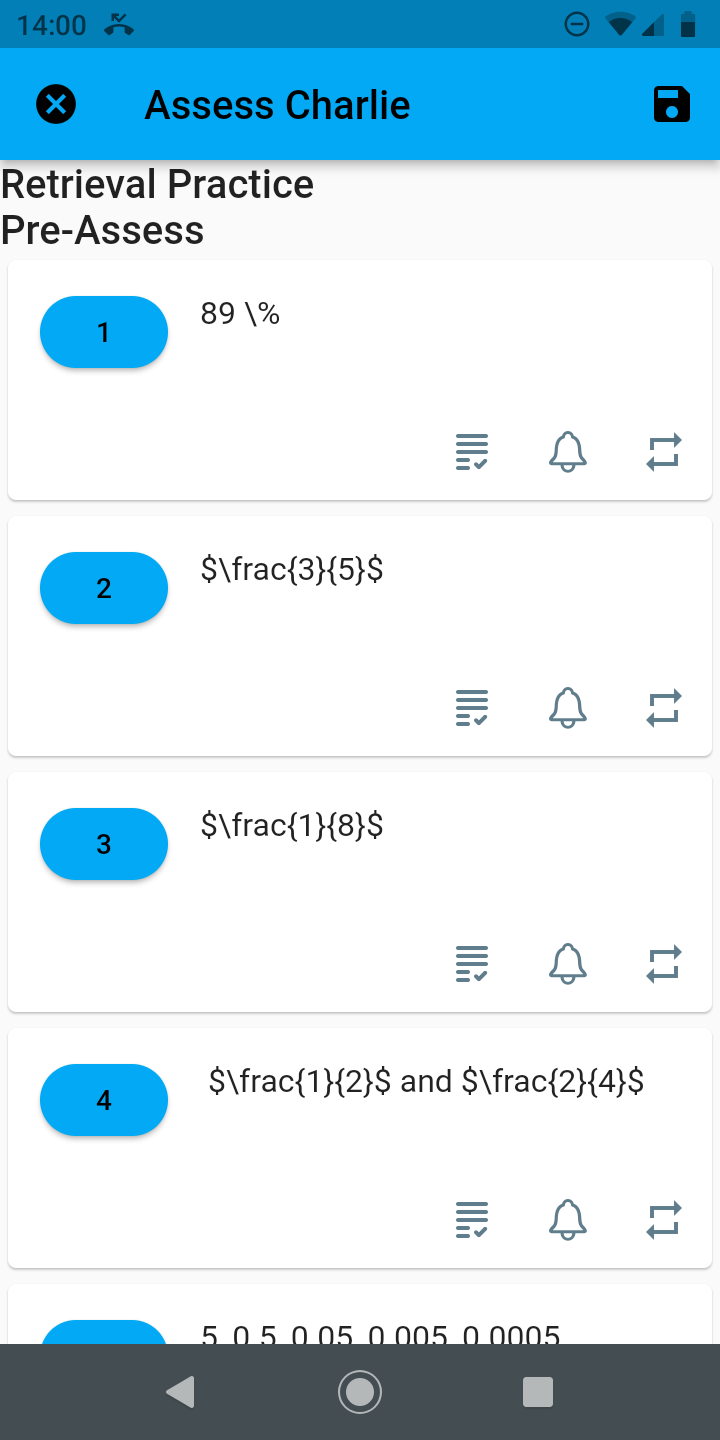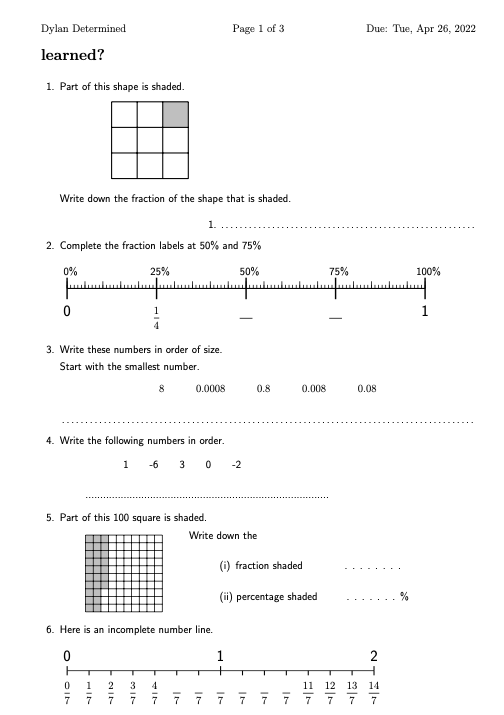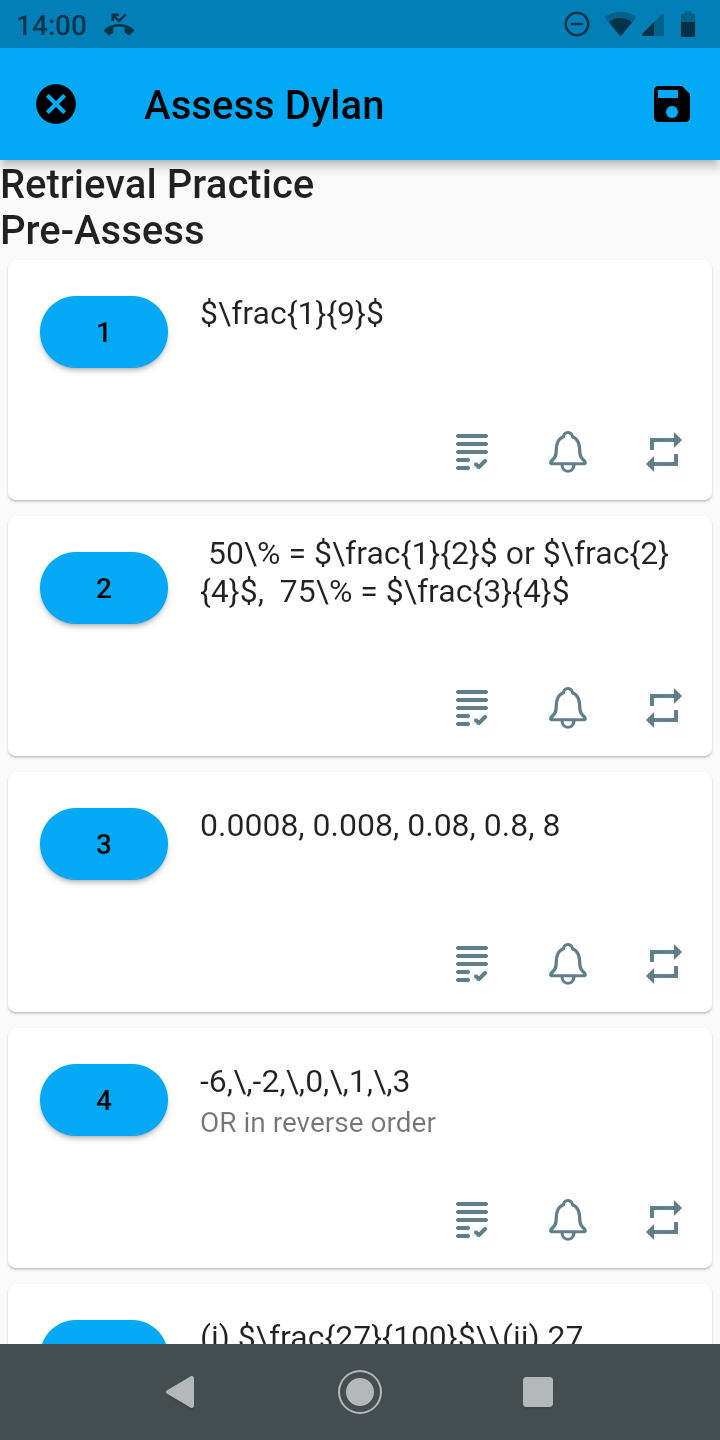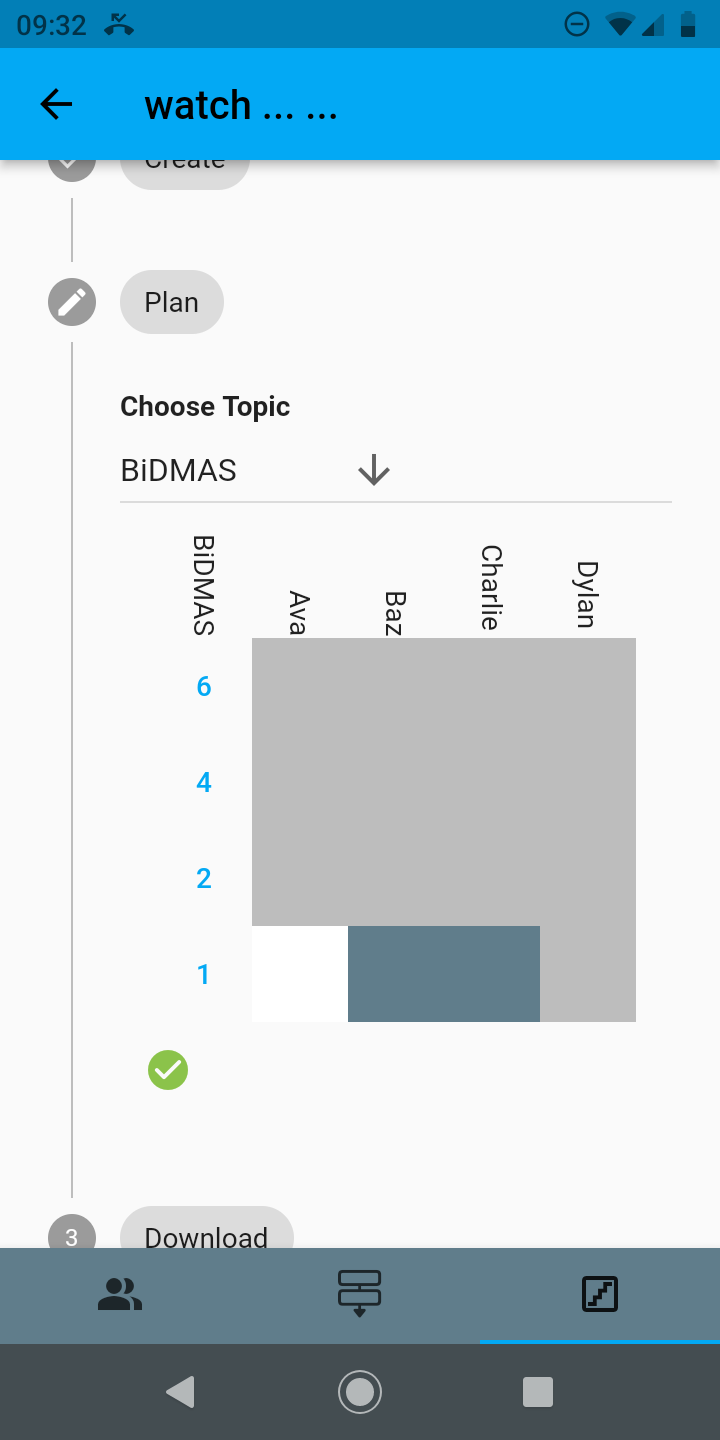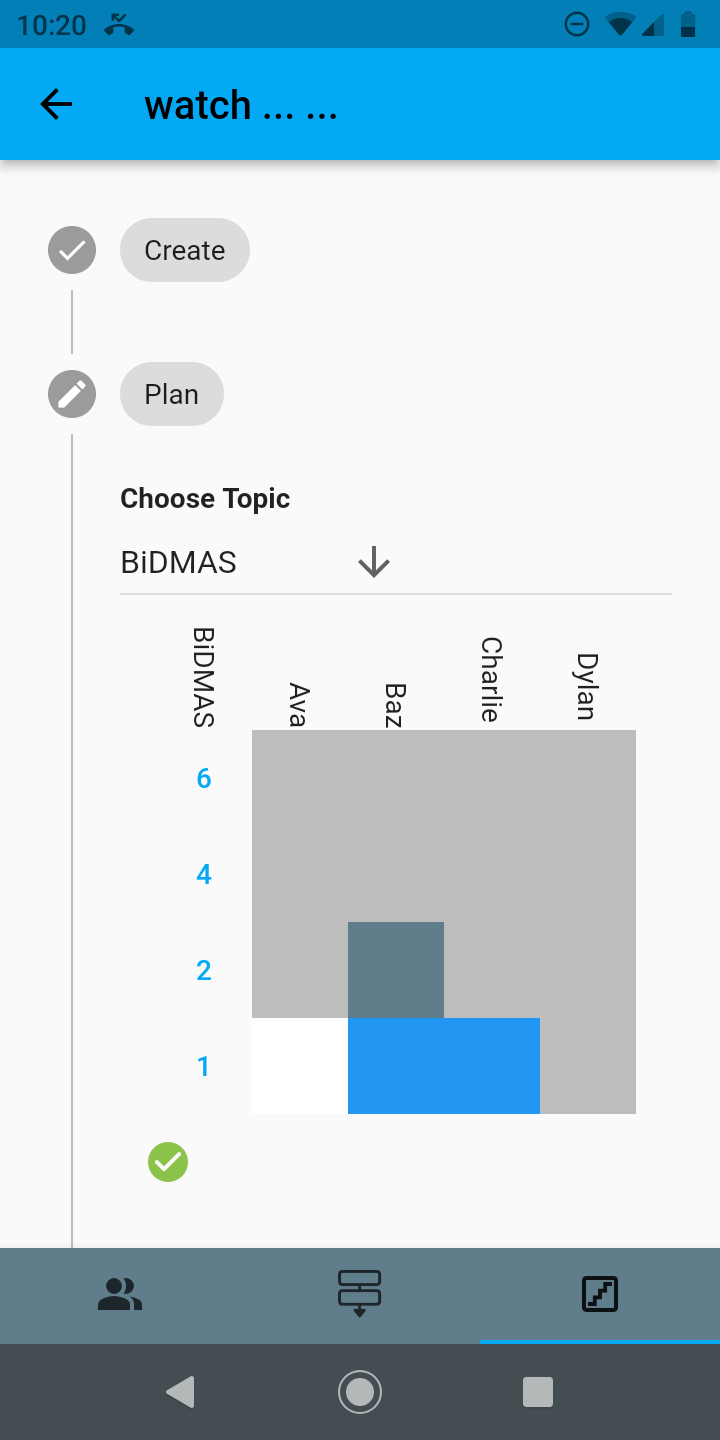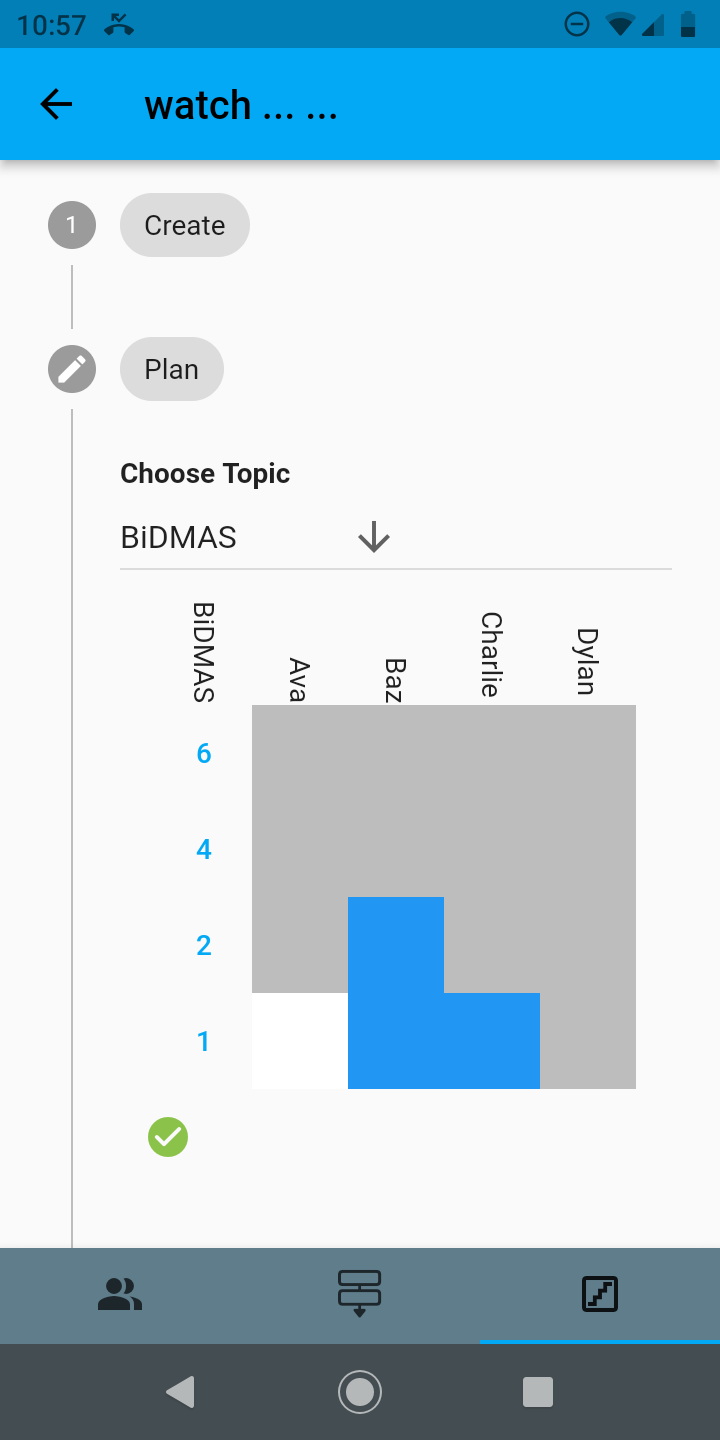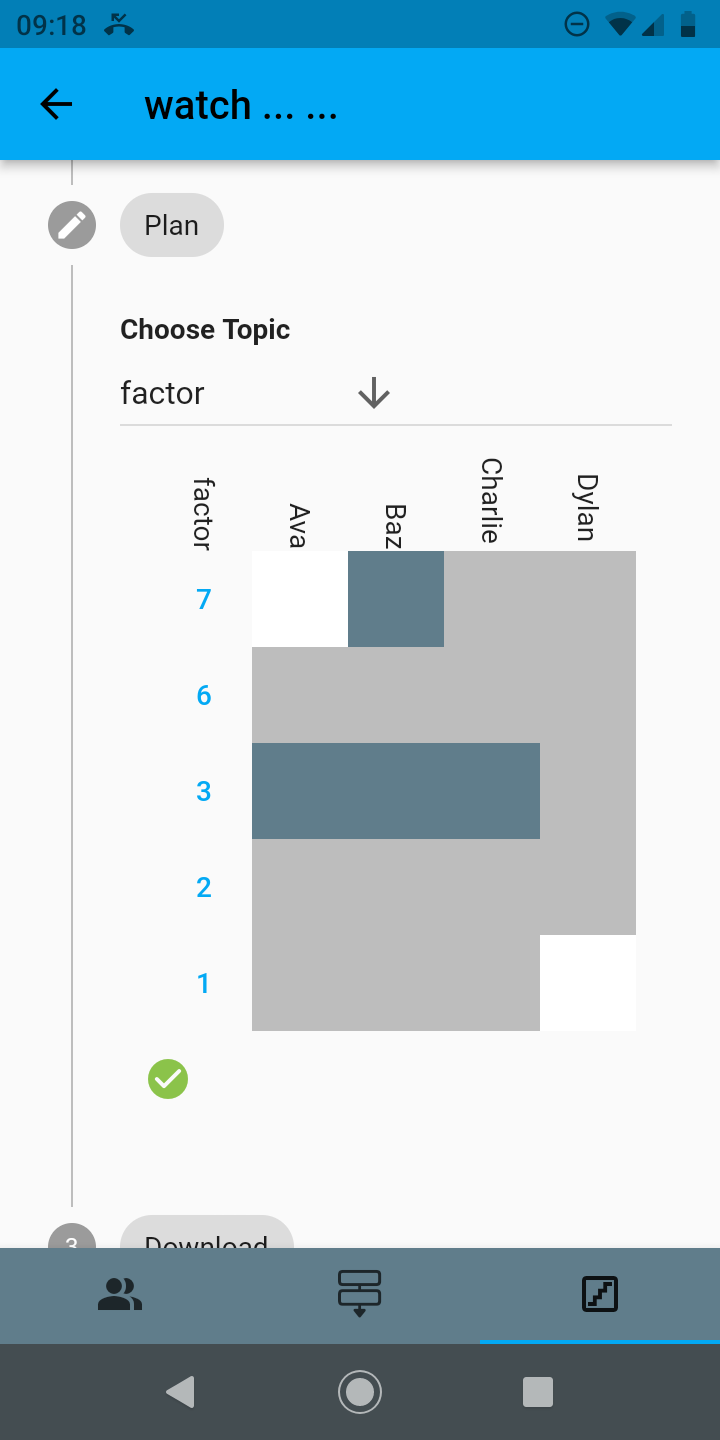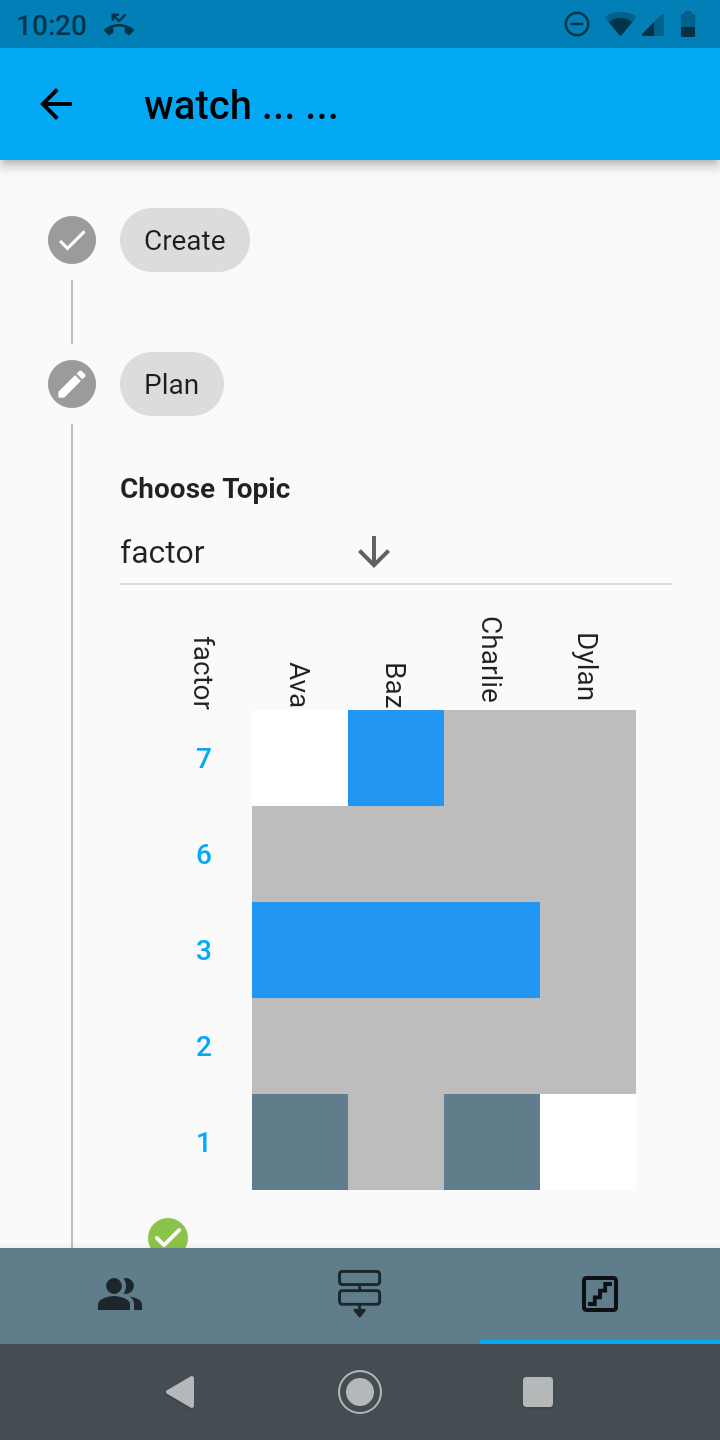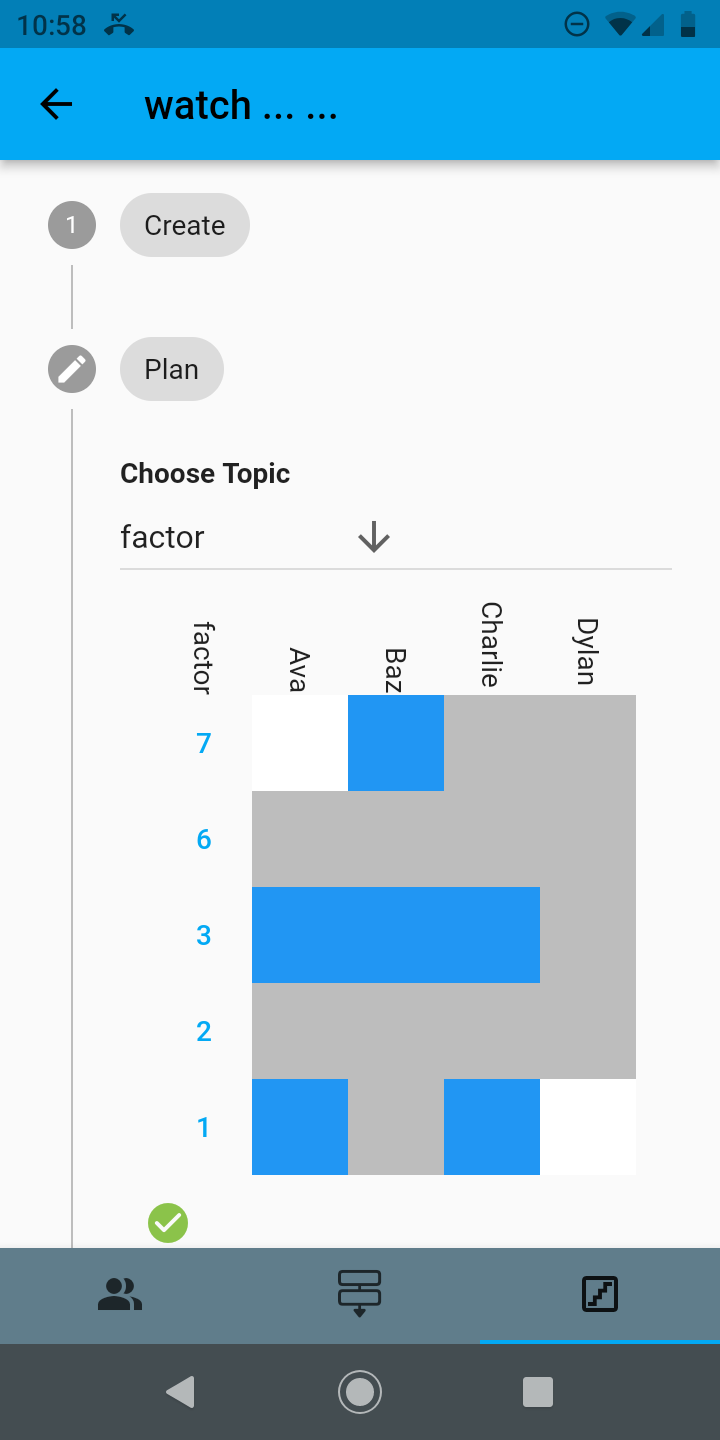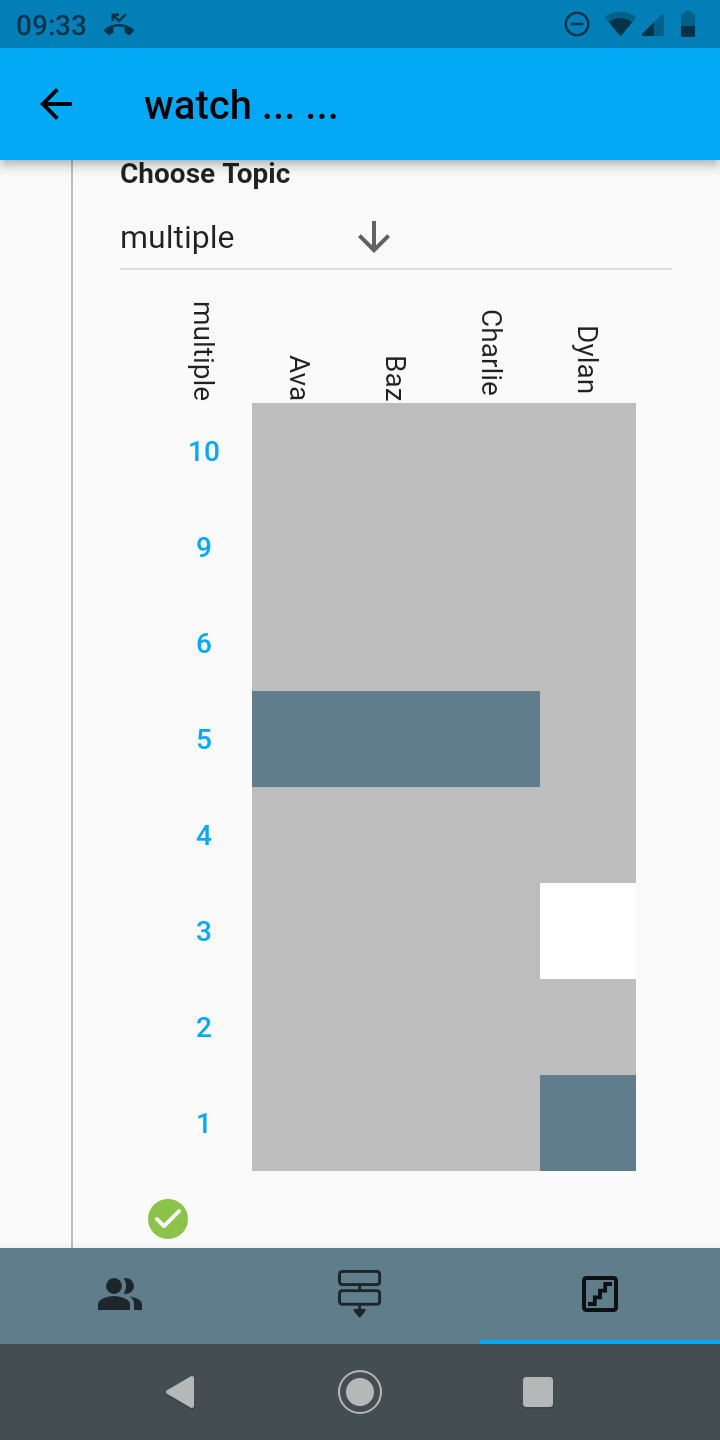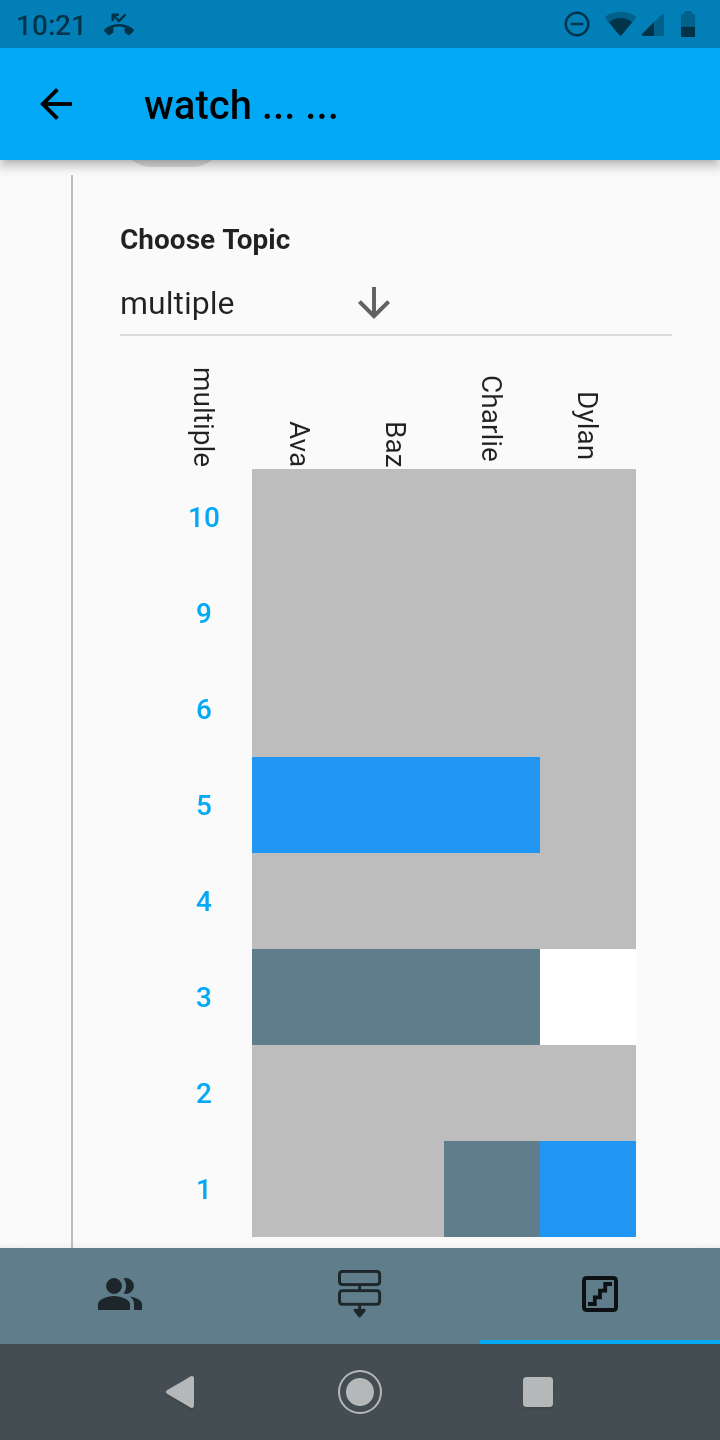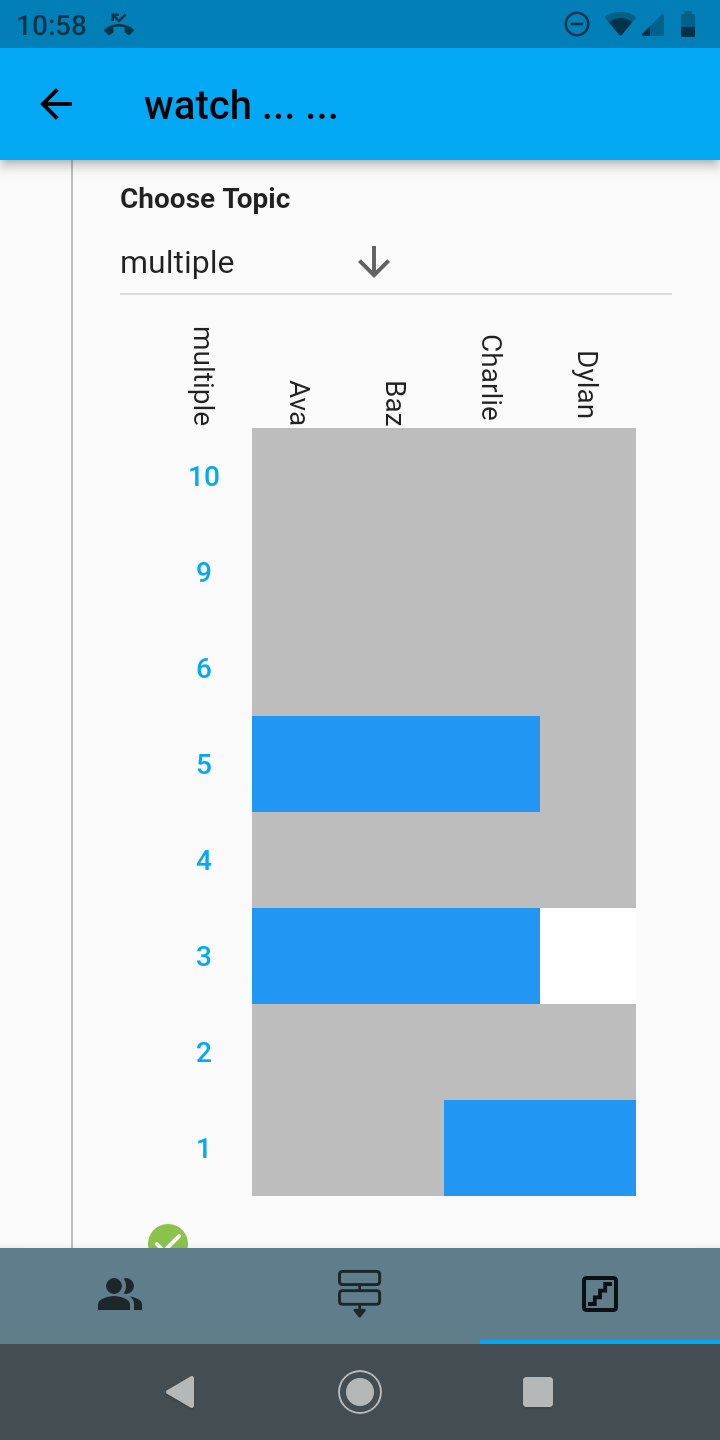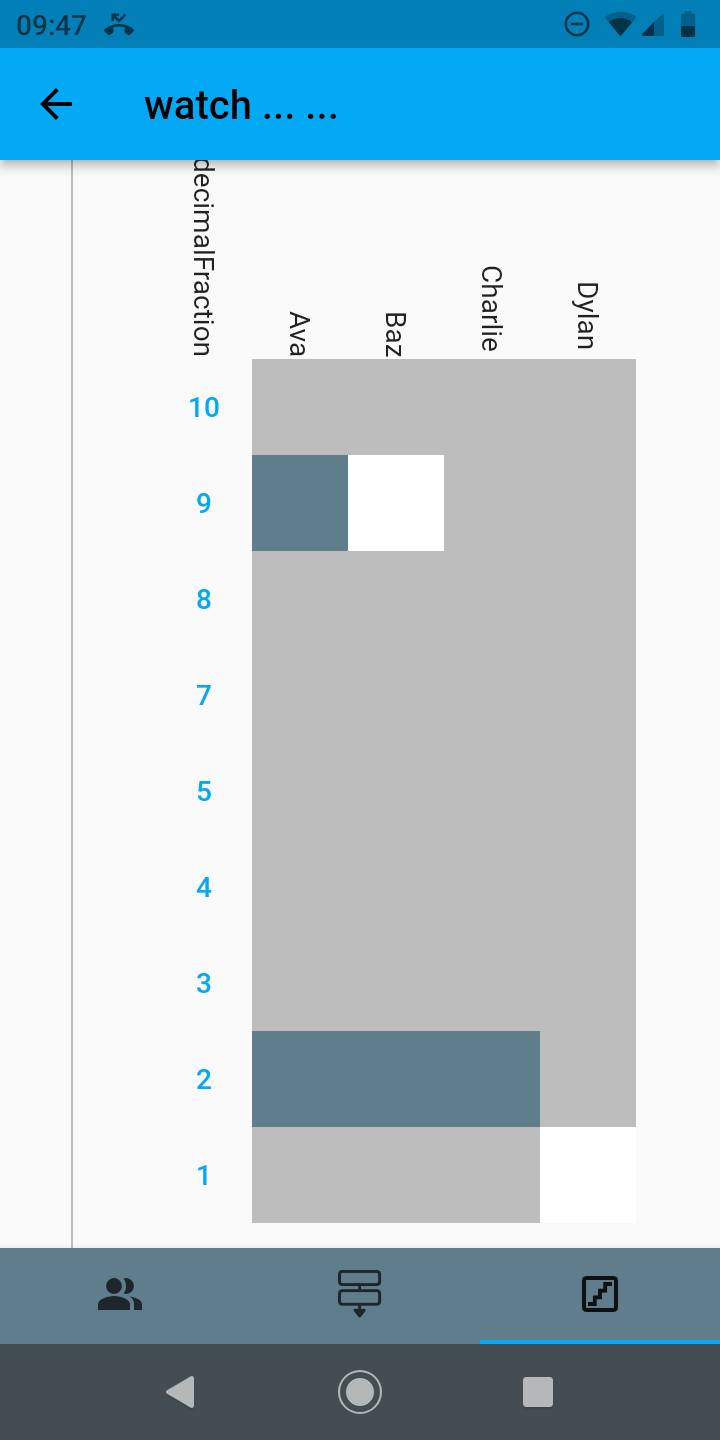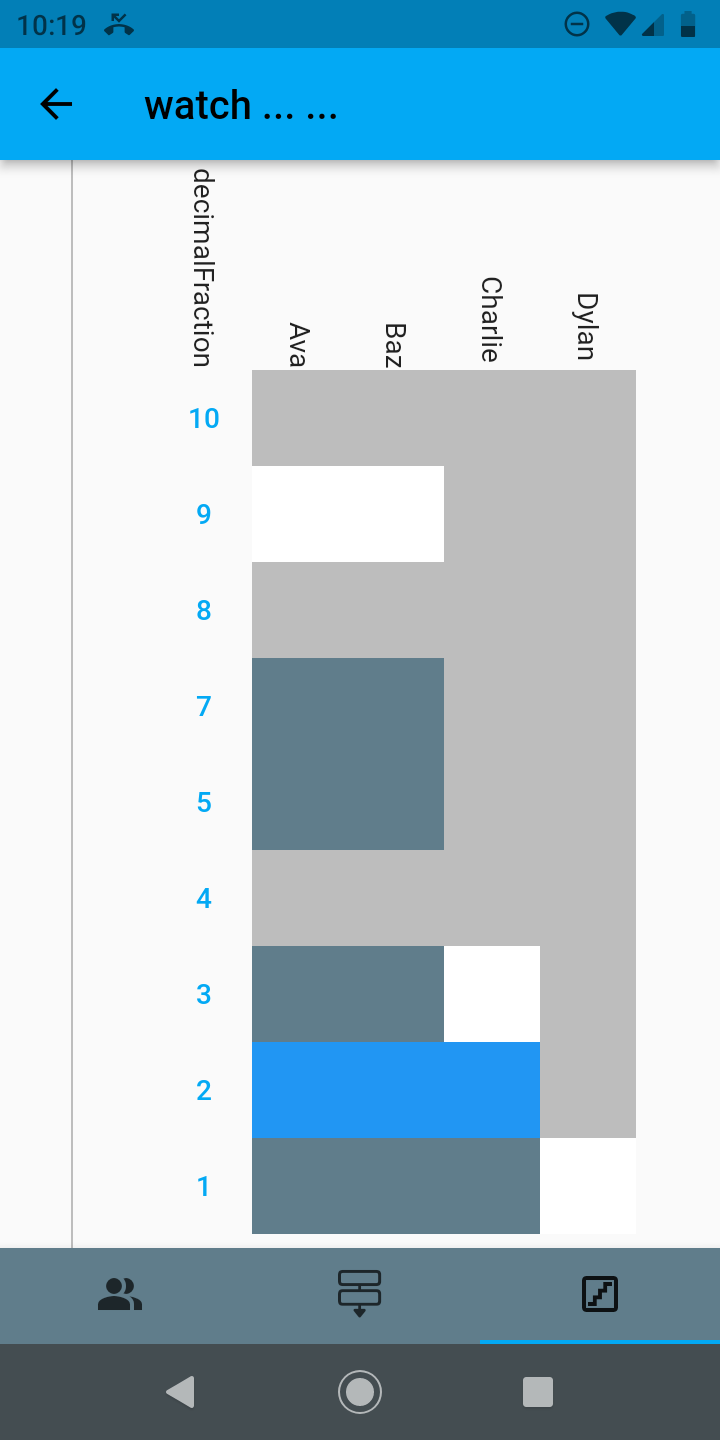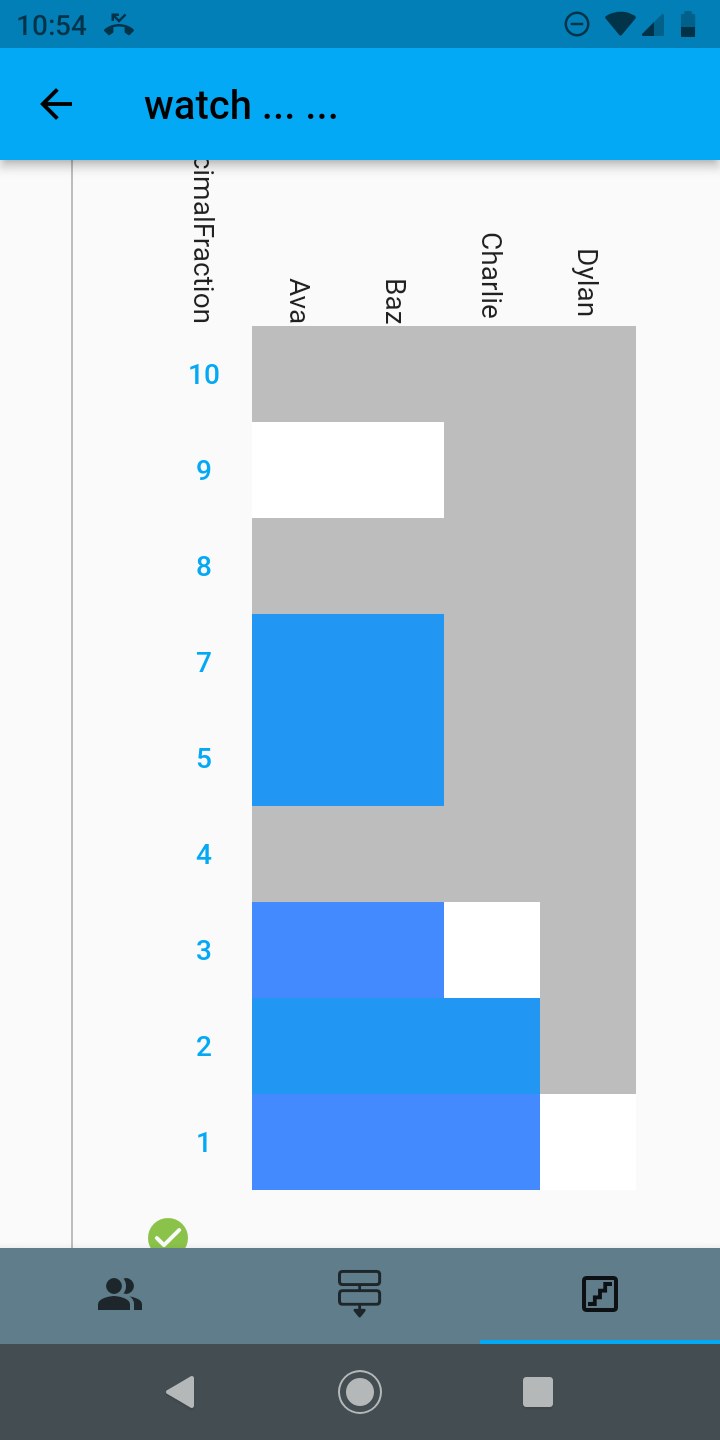...
| Expand | ||||||||||||||||||||||||||||||||||||||||
|---|---|---|---|---|---|---|---|---|---|---|---|---|---|---|---|---|---|---|---|---|---|---|---|---|---|---|---|---|---|---|---|---|---|---|---|---|---|---|---|---|
| ||||||||||||||||||||||||||||||||||||||||
|
(9) plan teaching on firm learning foundations
The Pre-Assess builds up a picture of the class' skills on each topic.
We don’t have all the information, (its a balance between being ready to teach soon and not asking questions in assignments which might facilitate the learner to answer harder questions) but let’s look at what we can decide to teach.
Here a tutor has a challenge of teaching 4 very different learners, who have “weird and unexpected” strengths and weaknesses.
...
Topic
...
Ava
...
Baz
...
Charlie
...
Dylan
...
Level of Learner
...
Detail
...
Ava’s teacher has no real idea of grade learner would gain if she took her GCSE exam tomorrow (she is new to the school).
...
Baz, would gain a grade, which would almost certainly be below grade 4 if he took his GCSE exam tomorrow.
...
Charlie might gain a grade 1 if she took her GCSE exam tomorrow.
...
Dylan is not expected to get any grade if he took his GCSE exam tomorrow.
...
Global target
...
N/A
...
Find and fill in some glaring gaps.
...
Fill in gaps and improve
his ability to read questions with meaning,
his accuracy
...
Charlie has some unexpected strengths, so here the task is to find out why she has so many weak areas, as well as build on her strengths.
...
Dylan, is one of the weakest learners in the school, so may well have been taught “too hard” in most his maths lessons - so err on the side of easy and see how learning embeds.
BIDMAS - could be taught as an extension layer in the second half of a lesson - or see teaching suggestion given when planning teaching of the topic factor
...
Ava doesn’t know this, and her assessment on multiple and factor indicate she would be better learning other skills.
...
A surprise that Charlie knows this - her numeracy skills are higher than expected.
...
This topic will be too hard for Dylan. Due to his low level for learner, he wasn’t even asked questions form this layer. The teacher might teach him some 4 operation skills, which the rest of the learners already know.
...
multiple
...
Teach layer 6
...
Teach layer 6
...
Teach layer 6
...
Teach layer 2 (we want to get him feeling positive and successful)
...
factor
...
...
Teach layer 6
...
Doesn’t need to learn - teach BIDMAS layer 4, while the other learners, learn factor skills
...
Teach layer 6
...
Teach layer 1
...
decimal fraction
...
Teach layer 8 or 9
Layer 8 is a scaffold of 9 - so err on the side of caution, while the teacher gets to know the class.
...
Teach layer 8 or 9
Layer 8 is a scaffold of 9 - so err on the side of caution, while the teacher gets to know the class.
...
Teach layer 3
...
Teach layer 1
...
fraction +/-
The 3 different layers all rely on labelling a fraction line - so shouldn’t be too difficult for the teacher - layer 5 isn’t like this, so teach Baz layer 6 rather than layer 5.
...
Teach layer 6
...
Teach layer 6
NB not layer 5
as it relies on fractionINTRO 9
as can learn layer 6 with Ava this term and next term layer 5 with Charlie
...
Teach layer 4
...
Teach layer 1
...
fraction INTRO
...
Teach layer 11
...
Teach layer 5
Get Baz and Dylan to teach each other?
...
Teach layer 7
...
Teach layer 6
Get Baz and Dylan to teach each other?
| Expand | ||||||||||||||||||||
|---|---|---|---|---|---|---|---|---|---|---|---|---|---|---|---|---|---|---|---|---|
| ||||||||||||||||||||
For the first 3 topics, let’s watch how timely practice auto Pre-Assess works. | after 1st assignment (1 round of pre assess) | factor 3rd assignment (3 rounds of pre assess) | after 4th assignment (pre assess is complete) | decimal fraction FYI Each layer asked twice to confirm correct answers weren’t just a lucky question/guess: here we see Ava could answer her first question on decimal fractions layer 9
but not her second,
FYI assumed knowledge - is the slightly deeper bright blue. The learner is assumed to know a layer, because of the other layers they already know e.g. a learner who already knows decimalFraction(5) is assumed to know decimalFraction(3), similarly a learner who already knows decimalFraction(2) is assumed to know decimalFraction(1). | ||||||||||||||||
| Expand | ||||||||||||||||||||
| ||||||||||||||||||||
The order for SOL of the example class was Integer BIDMAS factor multiple negative prime FDPR decimal fraction fraction +/- fraction INTRO order FPDR simplest form
|
(9) plan teaching on firm learning foundations
The pre-assess process automatically builds up a picture of the class' skills on each topic.
We don’t have all the information, but the information we collect, will allow the teacher to teach all learners in the class, something which each learner will find easy to learn. Meaning each learner is very likely remember the skills learned until the next lesson, and so the teacher is unlikely to need to give feedback due to forgetting. However often, in the first timely practice spiral of the curriculum, the teacher will be working on improving leaners' accuracy and finding and attempting to fix learning misconceptions - in other words creating firm foundations for future learning.
This layer is about how to use the timely practice app to select the layer to teach each learner, whereas https://timelypractice.atlassian.net/wiki/spaces/CKB/pages/3110699106/Best+practice+with+timely+practice#(8)-plan-which-layer-to-teach-each-learner-from-a-topic-using-AfL-data is more about thinking about the maths involved and https://timelypractice.atlassian.net/wiki/spaces/CKB/pages/3110699106/Best+practice+with+timely+practice#(9)-plan-the-teaching-and-learning-activities-of-the-lesson---so-each-learner-is-learning-on-firm-learning-foundations is about how to plan the lesson to teach the layers taught.
| Expand | ||
|---|---|---|
| ||
Mainly because it would take too long and it would be too traumatic for many learners - who have low self esteem in terms of their maths learning. We ask questions on a few key layers of a topic - which gives us a broad brush stroke picture of the learner’s skills and learning gaps - but only questions at an appropriate level for the learner. We know that relatively frequently asking one question on a layer is insufficient to find if a layer is secure or not, so we always ask a second question if the learner seems to know the first. (For learners lots of learning gaps/who rush asking 2 questions on a layer is very necessary - as for up to 40% of their layers, we will find one question answered correctly and a second not). Using the information on key layers we ask a question on layers, we call them interesting layers, we think will find helpful to plan their teaching. There are some layers which we don’t ask questions on - usually these are layers which include considerable timely practice scaffolding - so the learner is unlikely to have met these type of questions before. After teaching the layer, the scaffolding will be very helpful to the learner, but before teaching the scaffolding is likely to be confusing). Our auto pre assess process is on our plans to improve soon. However the data the app collects will provide much better data than the teacher can expect to when using one or two pre assess questions at the start of the lesson because
… and we also ensure that the teacher is unlikely to teach too much to each learner on a topic, so each learner is ely to recall the learning of each lesson, until the next lesson, when the retrieval practice will begin to embed the learning deeply into long term memory. |
When we return to teach topics again, in the next spiral through the curriculum, we will have far more detailed information.
(10) teach-learn + practise-learn resources:
...
